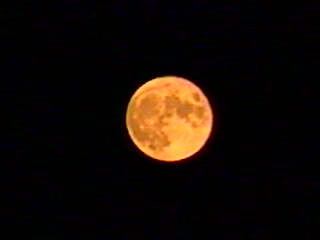An international team of astronomers is announcing today that they have identified the probable surviving companion star to a titanic supernova explosion witnessed in the year 1572 by the great Danish astronomer Tycho Brahe and other astronomers of that era.
This discovery provides the first direct evidence supporting the long-held belief that Type Ia supernovae come from binary star systems containing a normal star and a burned-out white dwarf star. The normal star spills material onto the dwarf, which eventually triggers an explosion.
The results of this research, led by Pilar Ruiz-Lapuente of the University of Barcelona, Spain, are being published in the Oct. 28 British science journal Nature. “There was no previous evidence pointing to any specific kind of companion star out of the many that had been proposed. Here we have identified a clear path: the feeding star is similar to our Sun, slightly more aged,” Ruiz-Lapuente says. “The high speed of the star called our attention to it,” she added.
Type Ia supernovae are used to measure the history of the expansion rate of the universe and so are fundamental to helping astronomers understand the behavior of dark energy, an unknown force that is accelerating the expansion of the universe. Finding evidence to confirm the theory as to how Type Ia supernovae explode is critical to assuring astronomers that the objects can be better understood as reliable calibrators of the expansion of space.
The identification of the surviving member of the stellar duo reads like a crime scene investigation tale. Even though today’s astronomers arrived at the scene of the disaster 432 years later, using astronomical forensics they have nabbed one of the perpetrators rushing away from the location of the explosion (which is now enveloped in a vast bubble of hot gas called Tycho’s Supernova Remnant). For the past seven years the runaway star and its surroundings were studied with a variety of telescopes. The Hubble Space Telescope played a key role by precisely measuring the star’s motion against the sky background. The star is breaking the speed limit for that particular region of the Milky Way Galaxy by moving three times faster than the surrounding stars. Like a stone thrown by a sling, the star went hurtling off into space, retaining the velocity of its orbital motion when the system was disrupted by the white dwarf’s explosion.
This alone is only circumstantial evidence that the star is the perpetrator because there are alternative explanations to its suspicious behavior. It could be falling in at a high velocity from the galactic halo that surrounds the Milky Way’s disk. But spectra obtained with the 4.2-meter William Herschel Telescope in La Palma and the 10-meter W.M. Keck telescopes in Hawaii show that the suspect has the high heavy-element content typical of stars that dwell in the Milky Way’s disk, not the halo.
The star found by the Ruiz-Lapuente team is an aging version of our Sun. The star has begun to expand in diameter as it progresses toward a red-giant phase (the end stage of a Sun-like star’s lifetime). The star turns out to fit the profile of the perpetrator in one of the proposed supernova conjectures. In Type Ia supernova binary systems, the more massive star in the pair will age faster and eventually becomes a white dwarf star. When the slower-evolving companion star subsequently ages to the point where it begins to balloon in size, it spills hydrogen onto the dwarf. The hydrogen accumulates until the white dwarf reaches a critical and precise mass threshold, called the Chandrasekhar limit, where it explodes as a titanic nuclear bomb. The energy output of this explosion is so well known that it can be used as a standard candle for measuring vast astronomical distances. (An astronomical “standard candle” is any type of luminous object whose intrinsic power is so accurately determined that it can be used to make distance measurements based on the rate the light dims over astronomical distances).
“Among the various systems containing white dwarfs that receive material from a solar-mass companion, some are believed to be viable progenitors of Type Ia supernovae, on theoretical grounds. A system called U Scorpii has a white dwarf and a star similar to the one found here. These results would confirm that such binaries will end up in an explosion like the one observed by Tycho Brahe, but that would occur several hundreds of thousands of years from now,” says Ruiz-Lapuente.
An alternative theory of Type Ia supernovae is that two white dwarfs orbit each other, gradually losing energy through the emission of gravitational radiation (gravity waves). As they lose energy, they spiral in toward each other and eventually merge, resulting in a white dwarf whose mass reaches the Chandrasekhar limit, and explodes. “Tycho’s supernova does not appear to have been produced by this mechanism, since a probable surviving companion has been found,” says Alex Filippenko of the University of California at Berkeley, a co-author on this research. He says that, nevertheless, it is still possible there are two different evolutionary paths to Type Ia supernovae.
On November 11, 1572, Tycho Brahe noticed a star in the constellation Cassiopeia that was as bright as the planet Jupiter (which was in the night sky in Pisces). No such star had ever been observed at this location before. It soon equaled Venus in brightness (which was at -4.5 magnitude in the predawn sky). For about two weeks the star could be seen in daylight. At the end of November it began to fade and change color, from bright white to yellow and orange to faint reddish light, finally fading away from visibility in March 1574, having been visible to the naked eye for about 16 months. Tycho’s meticulous record of the brightening and dimming of the supernova now allows astronomers to identify its “light signature” as that of a Type Ia supernova.
Tycho Brahe’s supernova was very important in that it helped 16th-century astronomers abandon the idea of the immutability of the heavens. At the present time, Type Ia supernovae remain key players in the newest cosmological discoveries. To learn more about them and their explosion mechanism, and to make them even more useful as cosmological probes, a current Hubble Space Telescope project led by Filippenko is studying a sample of supernovae in other galaxies at the very time they explode.
Original Source: Hubble News Release


